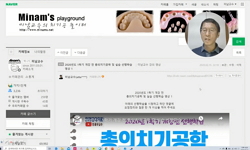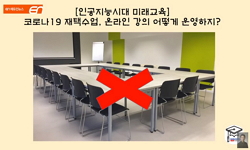2019년부터 현재까지 코로나 19는 학교 현장에 많은 변화를 초래했다. 2020년 1학기 개학 연기, 온라인 개학이 등장하며 콘텐츠 중심의 수업과 실시간 쌍방향 온라인 수업의 형태로 나뉘었다. 20...
http://chineseinput.net/에서 pinyin(병음)방식으로 중국어를 변환할 수 있습니다.
변환된 중국어를 복사하여 사용하시면 됩니다.
- 中文 을 입력하시려면 zhongwen을 입력하시고 space를누르시면됩니다.
- 北京 을 입력하시려면 beijing을 입력하시고 space를 누르시면 됩니다.
코로나 19 이후 실시간 쌍방향 온라인 수업의 공간성 분석 : A 초등학교를 중심으로(2) = Analysis on the Spatiality of Synchronous Bi-directional Online Classrooms during Covid19: an Ethnographic Case Study with A Primary School(2)
한글로보기https://www.riss.kr/link?id=A108013284
- 저자
- 발행기관
- 학술지명
- 권호사항
-
발행연도
2021
-
작성언어
-
- 주제어
-
자료형태
학술저널
-
수록면
1-61(61쪽)
- 제공처
-
0
상세조회 -
0
다운로드
부가정보
국문 초록 (Abstract)
2019년부터 현재까지 코로나 19는 학교 현장에 많은 변화를 초래했다. 2020년 1학기 개학 연기, 온라인 개학이 등장하며 콘텐츠 중심의 수업과 실시간 쌍방향 온라인 수업의 형태로 나뉘었다. 2021년부터는 등교수업과 원격수업을 병행하며 실시간 쌍방향 온라인 수업이 전격적으로 확대되었다. 이 연구는 그중 실시간 쌍방향 온라인 수업의 공간성이 어떻게 의미화되고 물질화되고 있는지 이해하는 것을 목적으로 한다. 이를 위해 이 연구는 물질성과 관계에 대한 분석을 중심으로 실시간 쌍방향 온라인 수업의 공간성을 탐구한다. 구체적으로 이 연구는 디지털 환경에서의 문화기술지적 방법을 통해 공간 구성의 역동을 구체적으로 이해하고자 한다.
서울시에 소재한 A 초등학교를 중심으로 하여, 연구에서는 한 학급의 사회 수업을 참여관찰하고, 학생 및 교사 참여자들과 심층면담을 진행하였다. 구체적인 연구 결과는 다음과 같다. 첫째, 온라인 공간의 물질성은 우연하게도 질문, 발언의 기회 둥 새로운 삶과 학습의 가능성을 드러냈다. 이는 동시에 그동안 ‘학교’ 에서 중점을 두었던 가치를 드러냄과 동시에 공간적 배치의 새로운 가능성을 시사했다. 둘째, 학교의 권력 관계의 복합적인 얽힘이 실시간 쌍방향 온라인 수업에서도 상호작용하고 있음을 확인하였다. 학습 형태의 결정권, 수직적인 학교 내 문화 등은 실시간 쌍방향 온라인 수업의 경험과 공간적 배치와 무관하지 않다. 셋째, 실시간 쌍방향 온라인 수업에서의 개별 행위자들이 경험하는 긴장과 모순을 드러냈다. 실시간 쌍방향 온라인 수업 공간이 개별 행위자에게 어떤 측면에서 다르게 경험되는지, 그리고 그 긴장이 어떻게 온라인 공간을 구성·재구성하는지를 확인하였다. 이와 같은 연구 결과를 통해 이 연구에서는 실시간 쌍방향 온라인 수업의 경험과 실시간 쌍방향 온라인 수업 공간의 사회-물질적 배치 (socio-material assemblage)를 탐색하였다.
이 연구의 가장 큰 특징은 ‘미래교육’으로 여겨졌던 온라인 수업과 ‘기존의 것’ 으로 여겨지는 대면 수업을 뚜렷하게 구분하지 않음에 있다. 연구자들은 온라인 수업 공간과 대면 수업이 이루어지는 학교 공간이 비인간/인간 행위자와 얽히며 만들어내는 복잡한 배치 과정을 이해하고자 하였다. 또한, 이러한 과정이 어떻게 학교를 새롭게 의미화하게 하는지 그 균열과 갈등 관계를 탐색하였다.
다국어 초록 (Multilingual Abstract)
Since the outbreak of Covid19 in 2019, diverse changes have been made in school settings. During the first semester in 2020, the decision had been made for students to be back in school ‘online’, and online classroom was further divided into conte...
Since the outbreak of Covid19 in 2019, diverse changes have been made in school settings. During the first semester in 2020, the decision had been made for students to be back in school ‘online’, and online classroom was further divided into contents-based classes and synchronous bi-directional classes.
Within such background, the study aims to explore how the ‘synchronous bi-directional classroom’ space is understood and materialised by the students and teachers. Ethnography in digital setting was conducted to analyse materiality alongside relationality within and beyond online classrooms and thereby understand the dynamics of its spatiality.
Participant observation in online classes for social studies in one primary school 6th grade class was conducted, followed by semi-structured interviews with the teacher and students. Findings are threefold: First, participants have experienced new possibilities of learning by actively questioning and speaking their opinions in class due to the materiality in online space. It led to questions on the ways of learning that had previously been valued m school spaces, while changing assemblages within school space were suggested. Second, complex power relations in school spaces such as hierarchical school culture manifested themselves in online classrooms in diverse ways. Third, tensions and ambivalence between participants in online classroom space were shown, suggesting how the space is differently experienced and actively re/constructed by the individual actors. Based on these findings, socio-material assemblage of synchronous bi-directional online classes and the participants’ experiences within such assemblage were explored.
The study has implications in investigating into the meanings of schooling and learning by questioning the expansion of synchronous bi-directional online classes in its relation with the spatiality of school, without demarcating the two. Complex assemblages created by the dynamics between non/human actors in both online classroom spaces and school spaces were the focus of the study. We suggest that questioning such assemblages including tensions and disruptions leads to understanding the changing meanings of schooling.
동일학술지(권/호) 다른 논문
-
영아기 첫째 자녀를 둔 어머니가 인식한 육아행복에 관한 개념도 연구(2)
- 어린이재단
- 정아름 ( Areum Jeong )
- 2021
-
- 어린이재단
- 임혜정
- 2021
-
다문화 청소년의 진로장벽에 영향을 미치는 위험요인과 보호요인 - 혼합연구방법론을 활용
- 어린이재단
- 정은별
- 2021
-
문화소외계층 청소년 대상 EBP 기반 환경교육과정 개발모형 연구(2)
- 어린이재단
- 정유진 ( Yoo Jin Chung )
- 2021




 KISS
KISS






